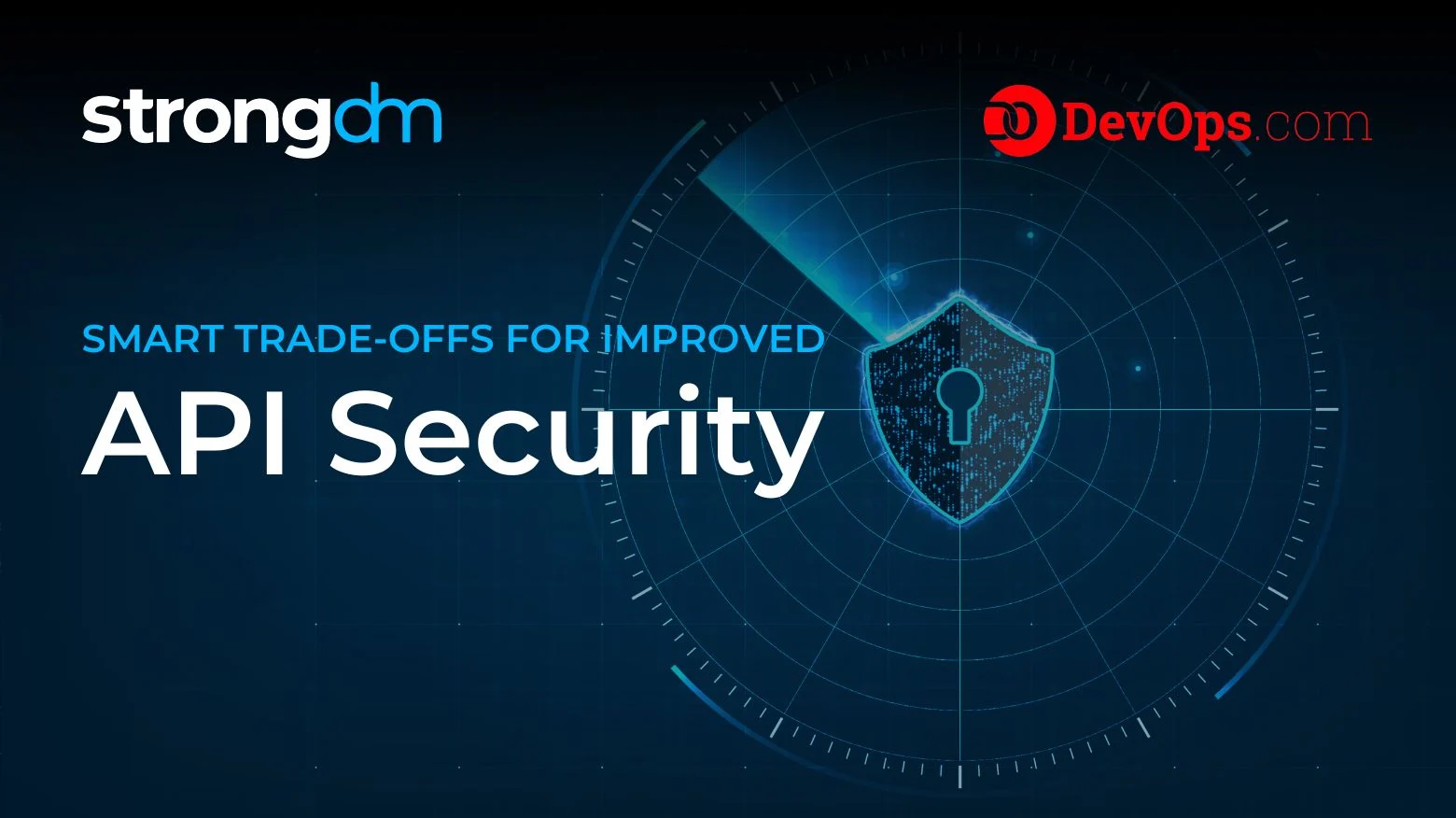

Written by
Maile McCarthyLast updated on:
March 3, 2023Reading time:
Contents
Built for Security. Loved by Devs.
- Free Trial — No Credit Card Needed
- Full Access to All Features
- Trusted by the Fortune 100, early startups, and everyone in between
API use is driving the digital economy as organizations increasingly adopt new technologies to improve business processes, culture, and customer experience. Justin McCarthy, CTO and co-founder of StrongDM, recently sat down with securityboulevard.com and a panel of technology experts to discuss the unique challenges of API security, including the role of testing and automation and the value of making smart trade-offs to improve your API security as well as your peace of mind.
The full panel included:
- Scott Gerlach—Co-Founder and Chief Security Officer at StackHawk
- Sharon Mantin—CEO and Co-founder at imVision
How can teams adapt to API security challenges? Here’s the recap:
Prioritize Testing
“Testing early, testing often is super important.”
— Scott Gerlach, StackHawk
APIs serve as the connectors between applications. They’re home to all the good stuff—the data, sensitive information, and other things you want to protect. And as organizations develop more APIs, bad actors are starting to leverage more attacks.
Applications often lack good security integration, making them prime targets. The biggest challenge for security experts, then, is how to integrate security into the lifecycle management of the API.
Scott Gerlach says, “We’re already doing unit testing and functional testing and integration testing. Security testing should just be part of that suite. It should be an automated thing that gives you information about whether or not you're making security mistakes.”
Establish a Culture of Quality
But how to automate? While the future role of AI and automation for security testing is unclear, there are several modern tools that can help you discover and pinpoint problems. Additionally, Scott adds, “having a really good culture of testing and being more and more integrated in that testing culture is really really important and super good for application security health.”
But security teams have long been telling developers to test more often—with mixed results. That’s why Justin McCarthy suggests you look for ways to make testing more engaging. “[D]eclare a hack day for your own staff to attack the API for a day. That's a fun way to sort of get everybody involved.” Clear communication is also crucial.
Learn to Speak the Same Language
“One part of bridging [the cultural disconnect between developers and security teams] is bringing concrete examples instead of a fog of suspicion and confusion.” —Justin McCarthy, StrongDM
Developers want to be security-minded. They want an awareness of potential mistakes so they can detect and prevent problems. Security experts must speak in plain language to communicate security needs in a way that is relevant to non-security members of the team.
In short:
- Drop the security jargon.
- Sit with developers and understand the problems they face.
- Maybe even learn the ticketing toolchain and how to submit a topic.
Security experts don’t need to become developers, but it would improve communication if they could learn a bit of code.
Make Smart Trade-Offs
“Can we kill this thing off?”
— Justin McCarthy
API security depends on a common understanding of the threat landscape from day one. The security conversation should start with the product manager, not the developer. Let them weigh security against revenue-generating features. Get them thinking clearly about the business cost of security violations. Clear communication among management, security, and developers will help teams make smart trade-offs before the API is even built.
Take a similar approach to your existing APIs. Sharon says, “We always ask a prospect: How many APIs do you have? No one knows. Like anything in security, what you cannot see, you cannot protect.” Invest in discovery to find any zombie APIs—those that are running with nobody tending to them.
These legacy APIs are often still out there because somebody believes that they’re making money. Again, it’s essential to address this at the management level. Is this API really something we want to be running? If so, great. If not, let’s kill it off before it becomes a security problem.
Final Thoughts
Don’t get overwhelmed. While it’s not possible to prevent, fix, or even detect every threat to API security, it is possible to improve. Get as close to the root of the problem as you can. Find the language that’s meaningful to your customers and your environment. And ultimately, make rational tradeoffs between risk and reward. Everyone is going to feel better when you do.
Did you miss the panel? No problem. You can check out the replay. And if you’re looking to manage infrastructure access and audit the use of those APIs, come on over to StrongDM for a free demo.
Next Steps
StrongDM unifies access management across databases, servers, clusters, and more—for IT, security, and DevOps teams.
- Learn how StrongDM works
- Book a personalized demo
- Start your free StrongDM trial


About the Author
Maile McCarthy, Contributing Writer and Illustrator, has a passion for helping people bring their ideas to life through web and book illustration, writing, and animation. In recent years, her work has focused on researching the context and differentiation of technical products and relaying that understanding through appealing and vibrant language and images. She holds a B.A. in Philosophy from the University of California, Berkeley. To contact Maile, visit her on LinkedIn.
You May Also Like




